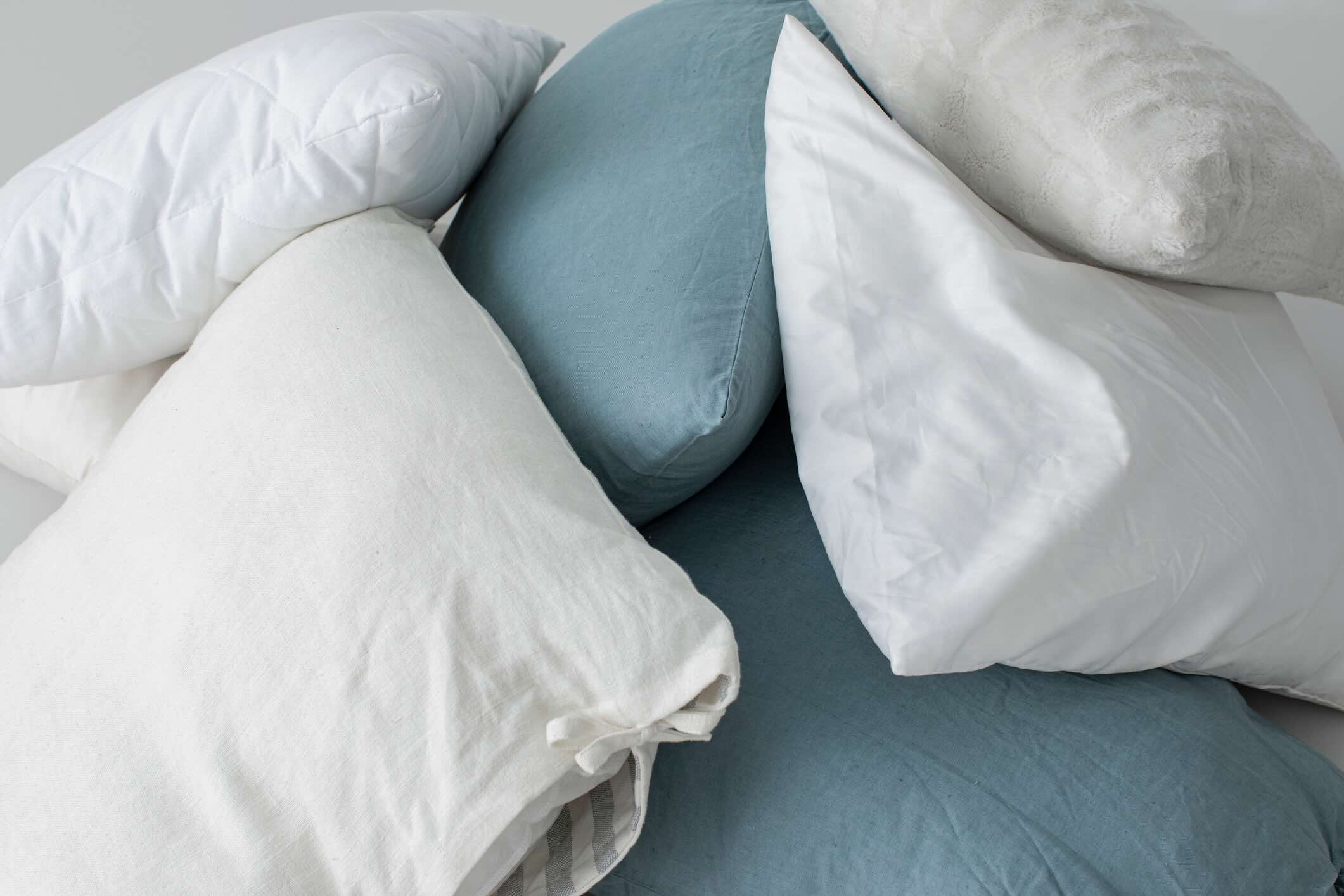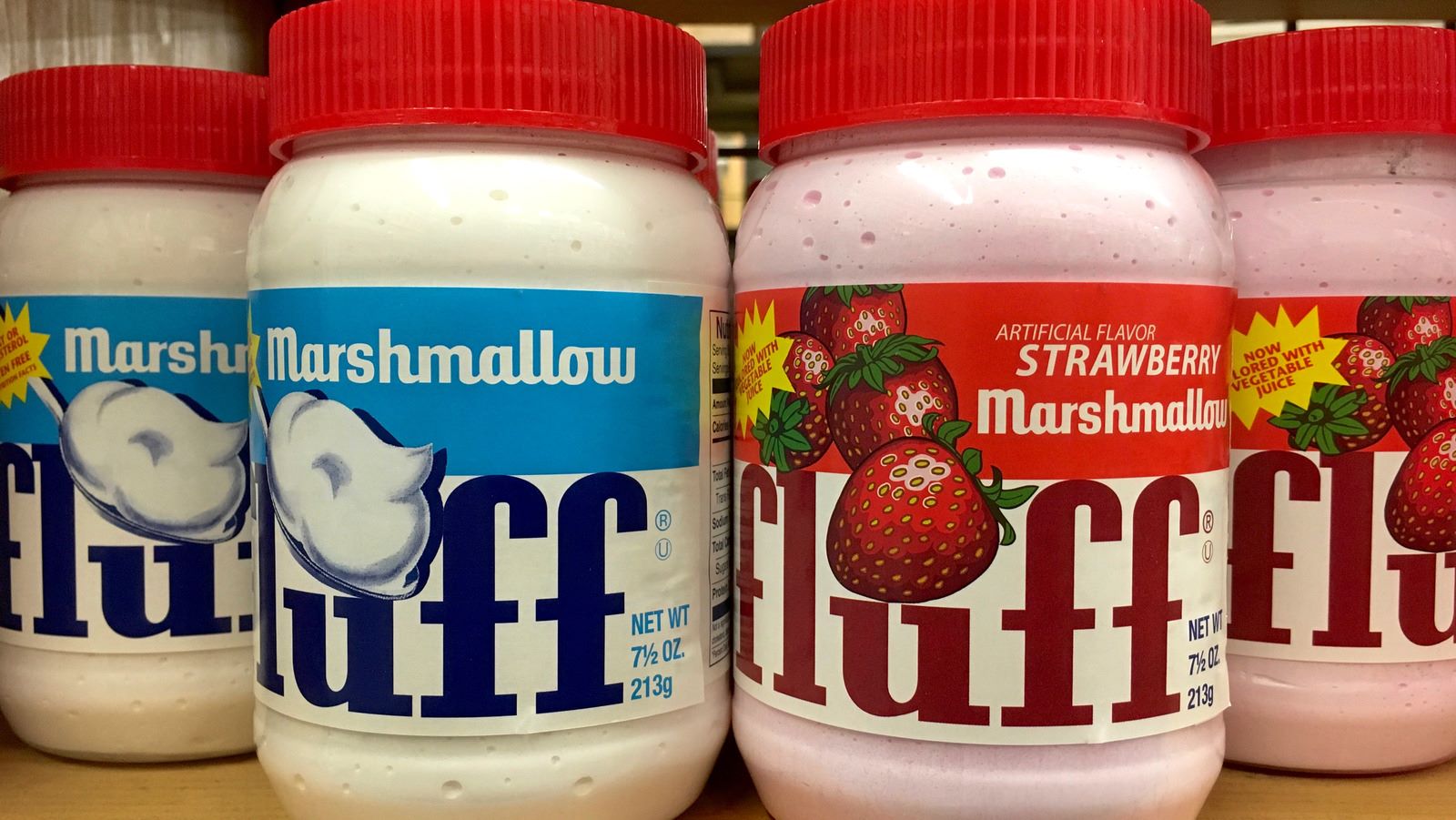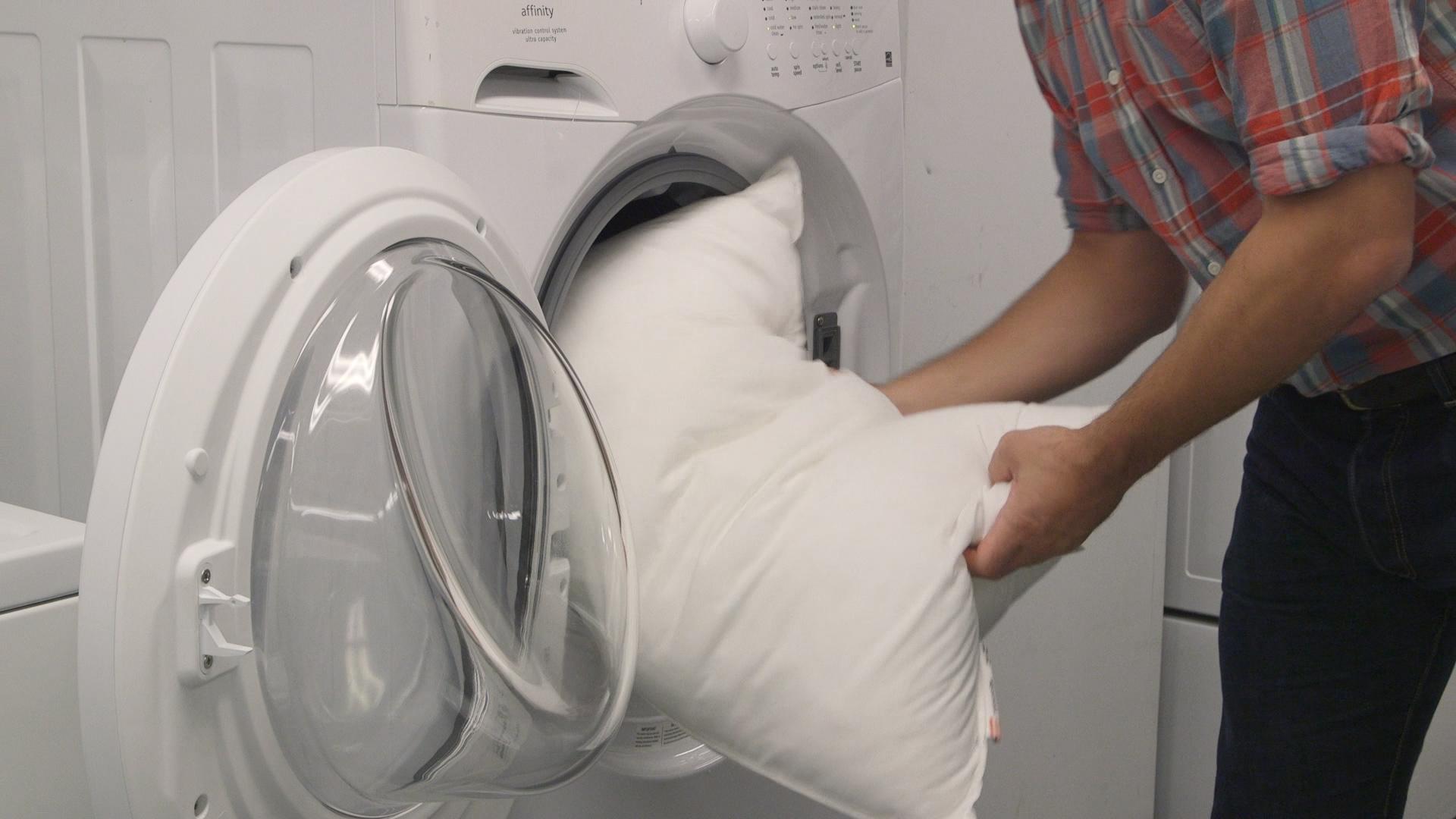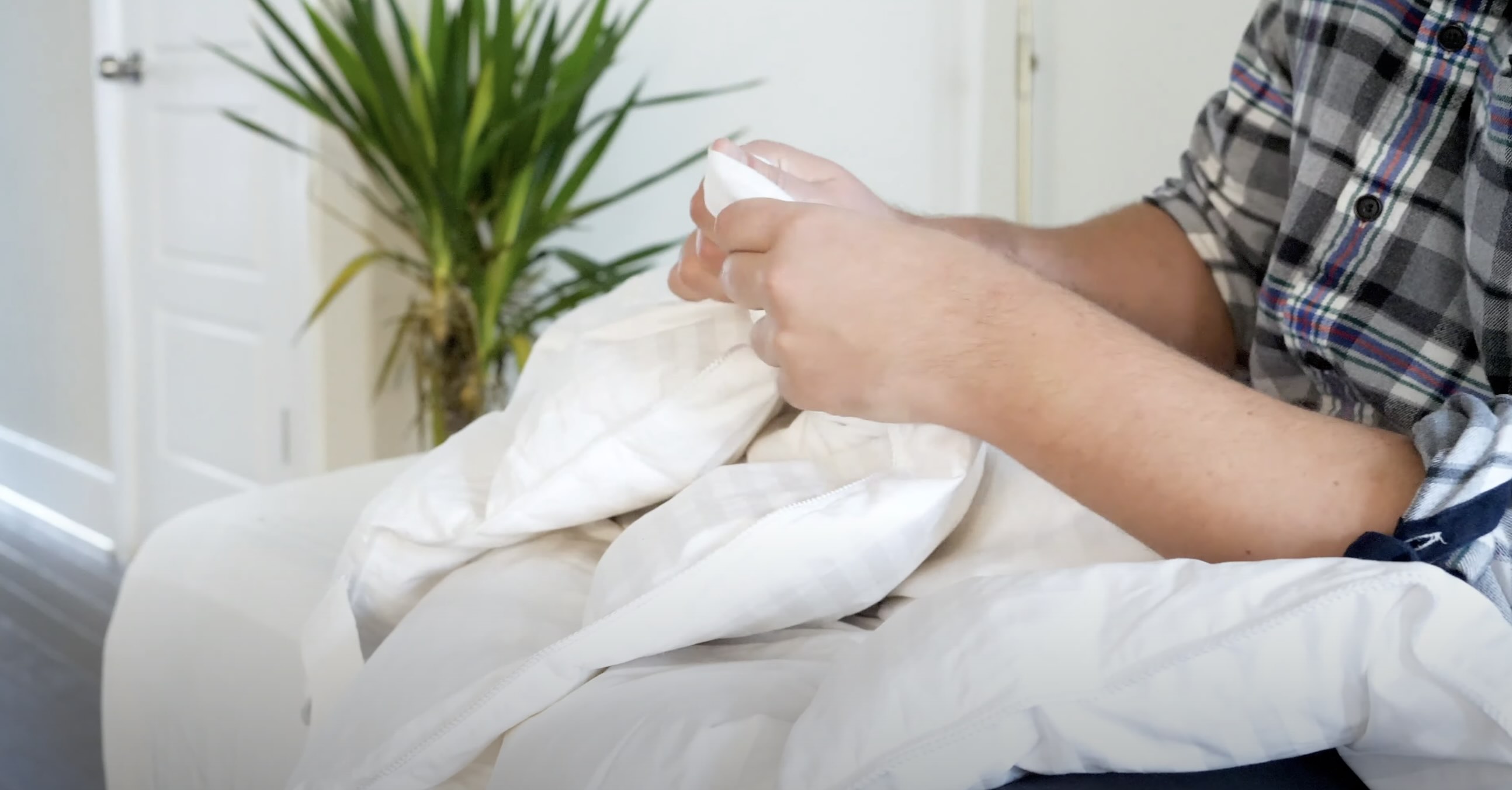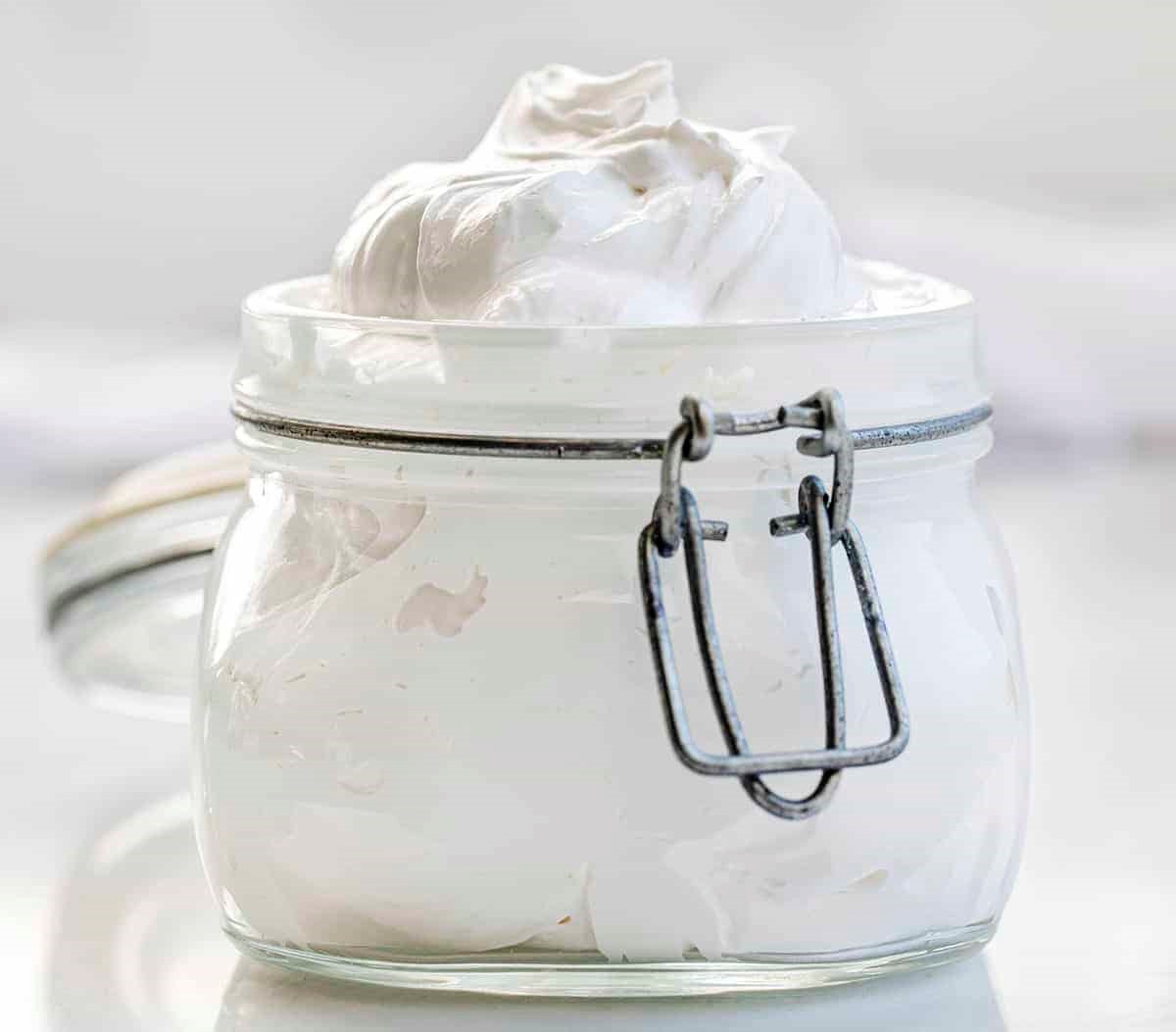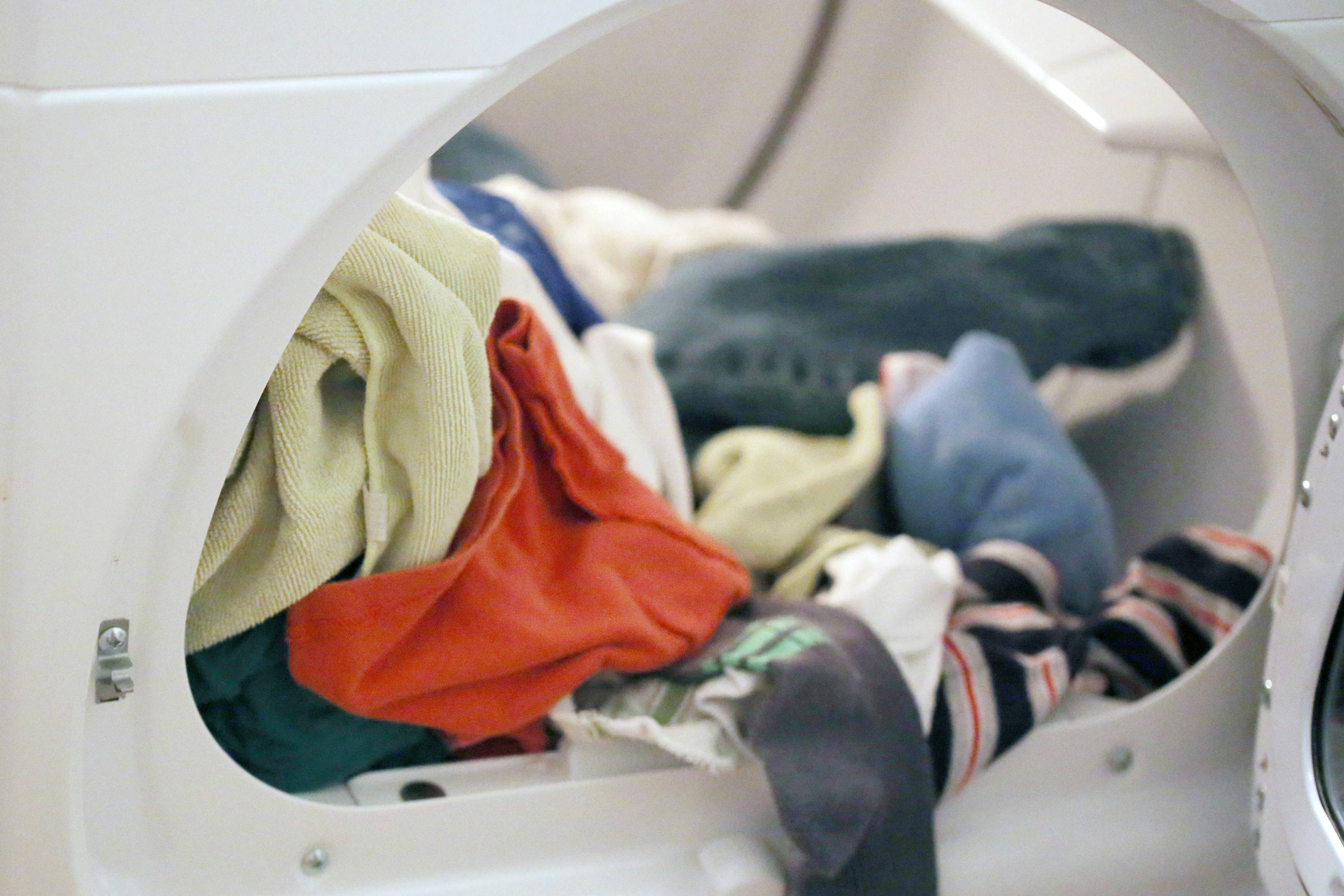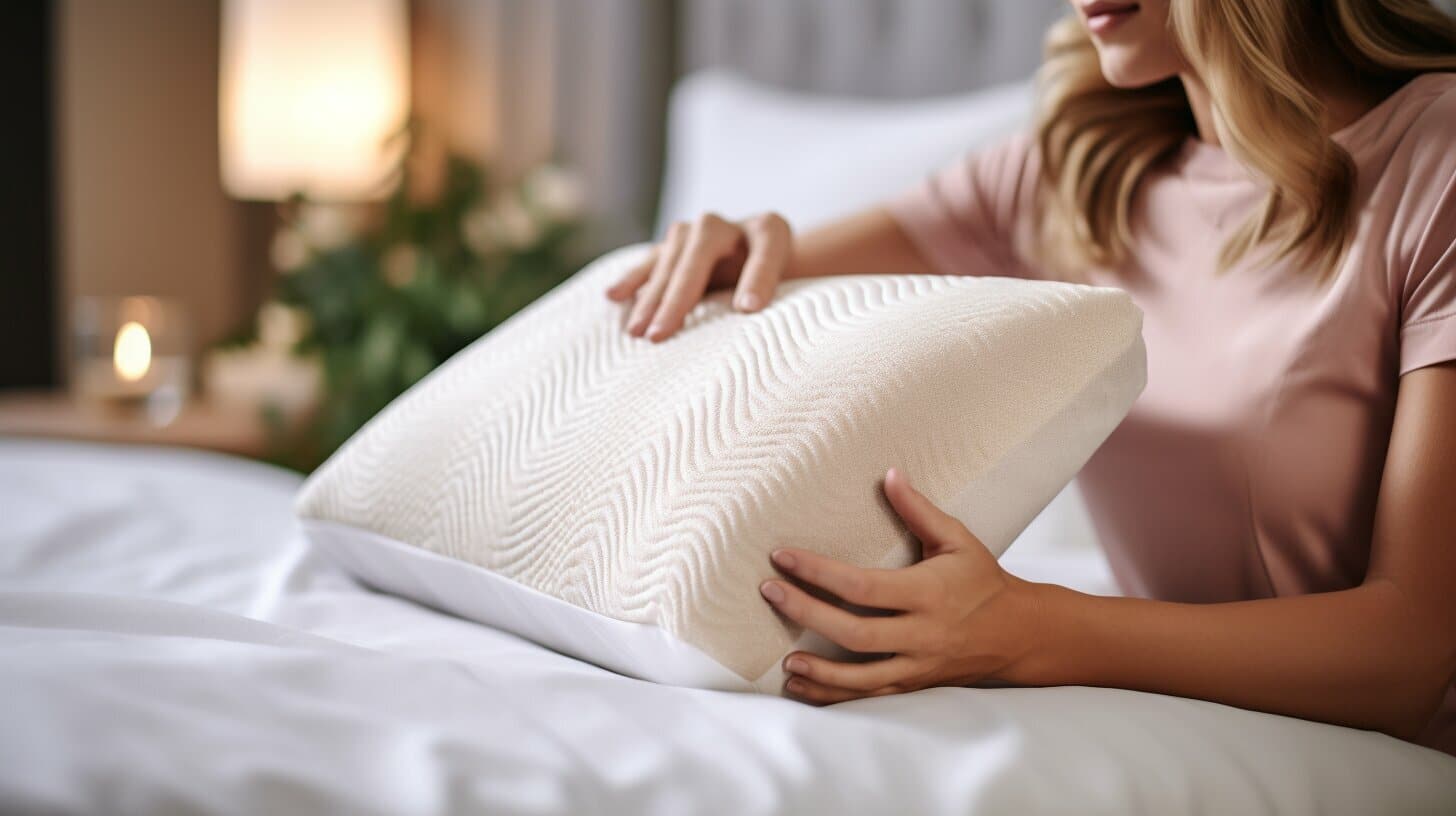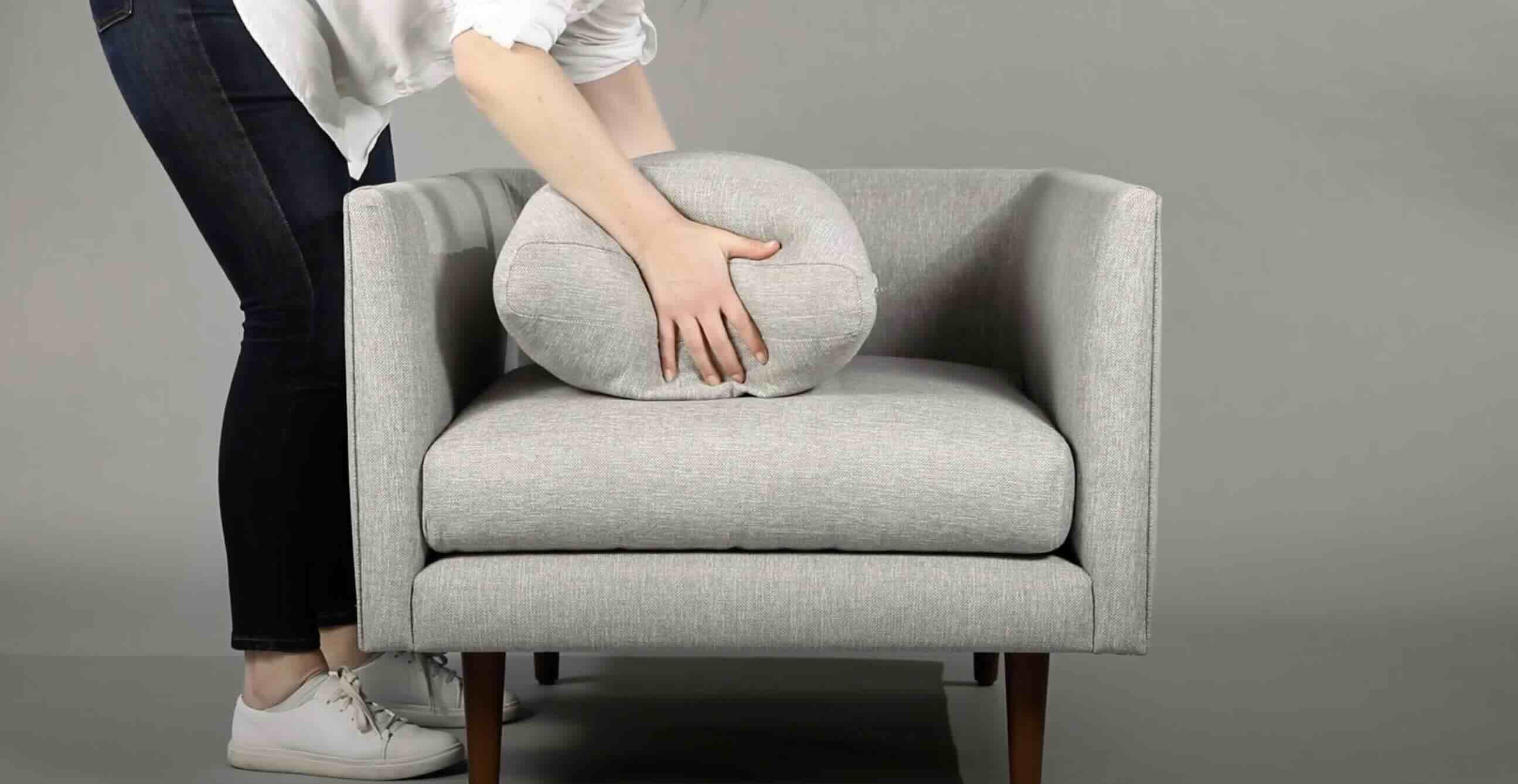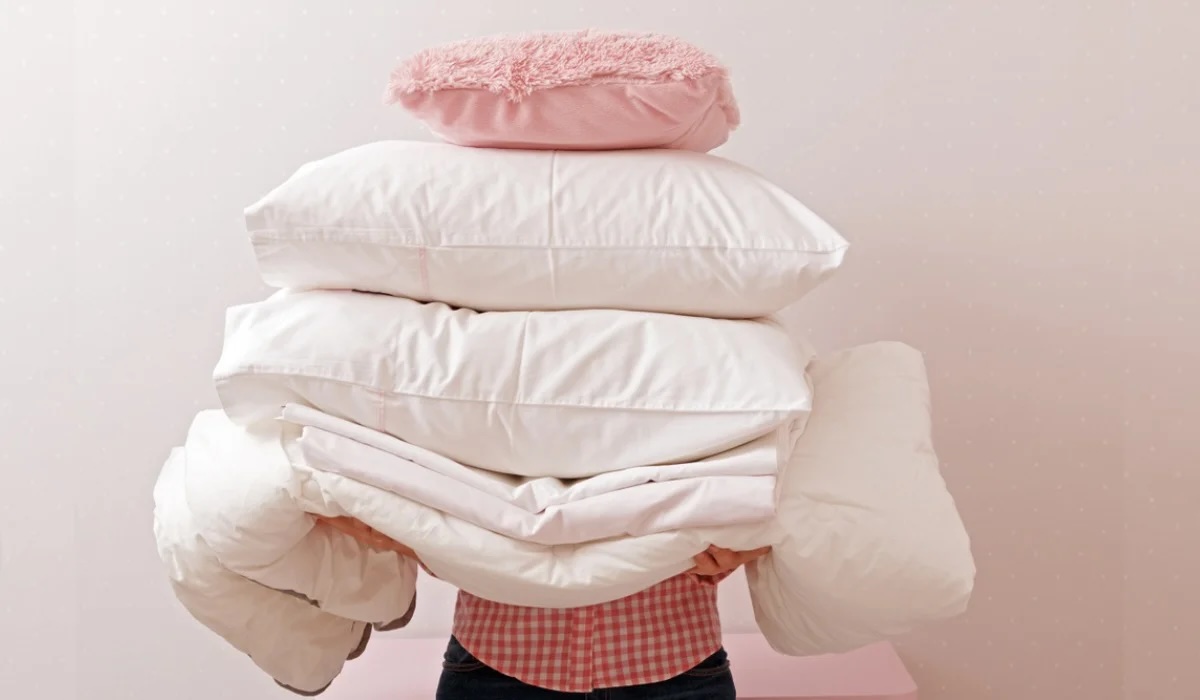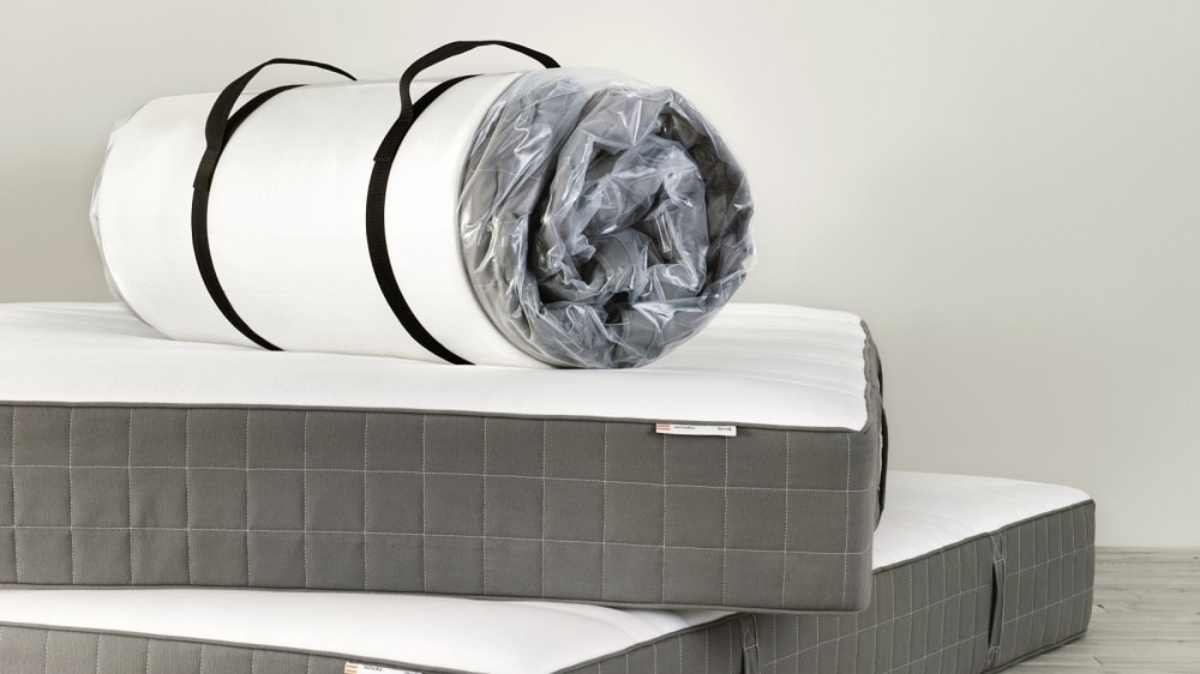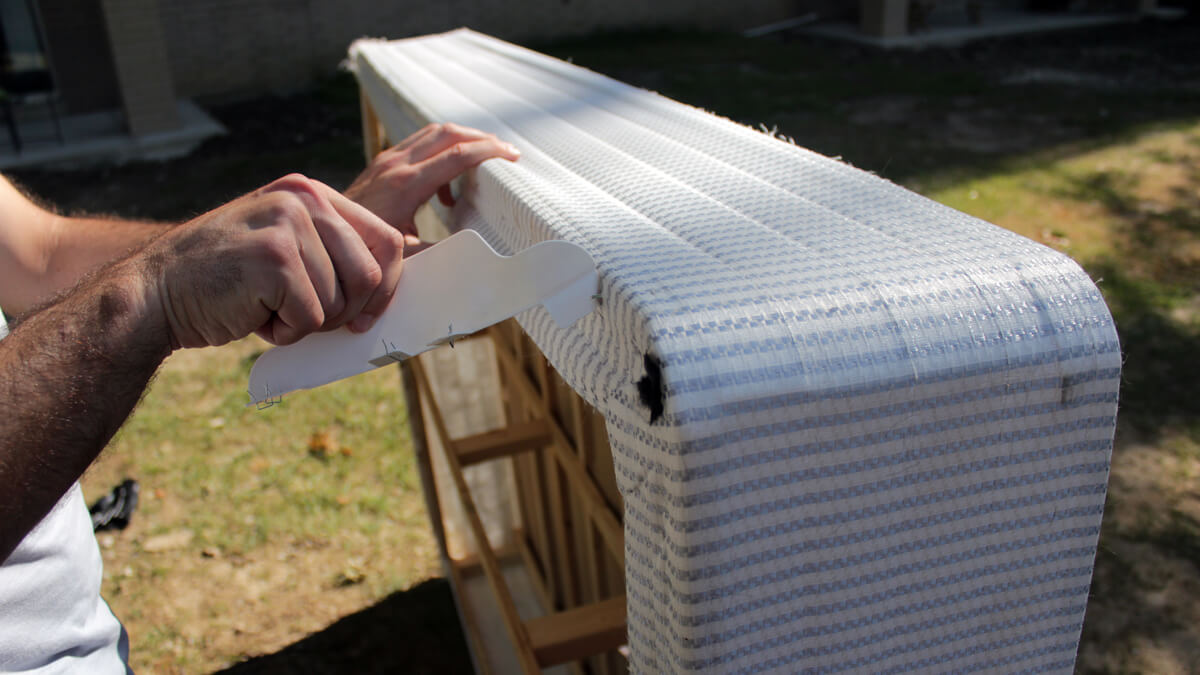Home>Furniture>Bedroom Furniture>How To Fluff A Mattress
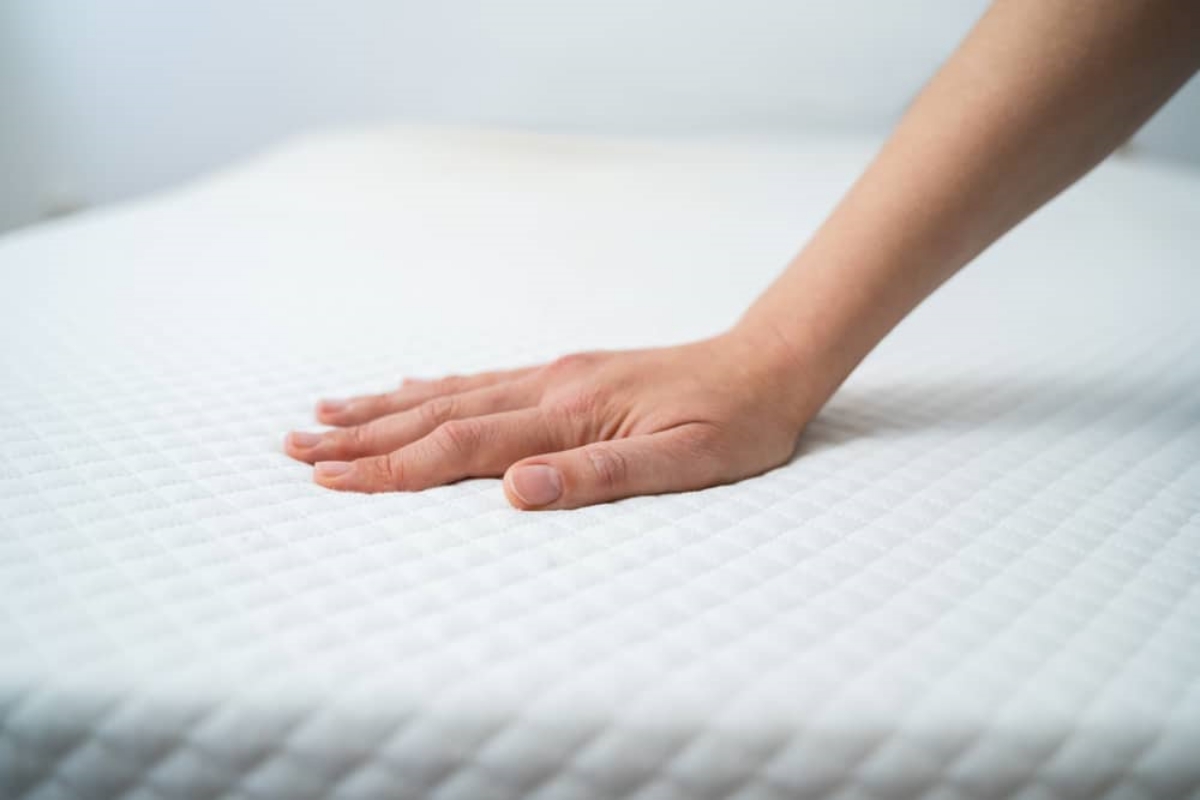

Bedroom Furniture
How To Fluff A Mattress
Modified: December 7, 2023
Looking to fluff your mattress? Learn how to do it like a pro with these simple tips. Transform your bedroom furniture and enhance your sleep experience.
(Many of the links in this article redirect to a specific reviewed product. Your purchase of these products through affiliate links helps to generate commission for Storables.com, at no extra cost. Learn more)
Introduction
Having a comfortable and inviting bedroom is essential for quality sleep and relaxation. One of the key factors contributing to a cozy bedroom atmosphere is a fluffy mattress. A well-fluffed mattress not only enhances comfort but also helps maintain the longevity of your mattress. In this article, we will delve into the importance of fluffing your mattress, signs that indicate your mattress needs fluffing, and provide a step-by-step guide to help you achieve a luxuriously fluffy mattress.
Imagine sinking into a cloud-like mattress at the end of a long day, feeling instantly enveloped in softness and support. That is the magic of a fluffed mattress. Fluffing your mattress helps redistribute the filling or padding inside, allowing it to regain its shape and provide optimal comfort. Over time, mattresses can become compressed and lose some of their fluffiness. This can happen due to body weight, regular wear and tear, and even the specific materials used in the mattress construction.
Fluffing your mattress not only enhances your overall sleep experience but also helps alleviate common issues such as sagging, unevenness, and discomfort. Additionally, regularly fluffing your mattress can extend its lifespan, ensuring you get the most out of your investment. By maintaining your mattress’s fluffiness, you can enjoy quality sleep for years to come.
Key Takeaways:
- Regularly fluffing your mattress maintains comfort, support, and longevity. Recognize signs like sagging and discomfort, and follow a simple step-by-step guide to rejuvenate your sleep surface.
- Consider using a mattress topper to enhance fluffiness and customize your sleep experience. Follow additional tips like rotating the mattress and maintaining a clean sleep environment for long-lasting comfort.
Read more: How To Fluff Cushions
Why Fluffing Your Mattress is Important
Fluffing your mattress is essential for several reasons. Firstly, fluffing helps evenly distribute the filling or padding inside the mattress, preventing certain areas from becoming too compressed while others remain untouched. This ensures that the mattress maintains its evenness and provides consistent support throughout. Without regular fluffing, certain areas of the mattress may sag or develop uncomfortable indentations over time.
Secondly, fluffing your mattress helps restore its natural shape and loft. Over time, mattresses can lose their original fluffiness due to continuous pressure from body weight and prolonged use. Fluffing helps reinvigorate the mattress, allowing it to regain its height and plushness. This ensures that you receive the maximum benefit from the mattress’s materials, whether it is foam, springs, or a combination of both.
Furthermore, fluffing can help alleviate discomfort and provide better spinal alignment during sleep. A compressed and flattened mattress can lead to improper support, causing issues such as back pain or muscle stiffness. Fluffing the mattress restores its supportive properties, helping your body maintain a neutral and comfortable position while you sleep.
Signs Your Mattress Needs Fluffing
It’s important to recognize the signs that indicate your mattress needs fluffing. Here are a few indicators that it’s time to fluff your mattress:
- Sagging or unevenness in certain areas of the mattress.
- Frequent waking up with back or neck pain.
- Loss of overall comfort and a less supportive feel.
- Visible flattening or compacting of the mattress surface.
- Uneven distribution of weight and pressure when lying down.
- Feeling “sunk in” or trapped in certain areas of the mattress.
If you notice any of these signs, it’s a clear indication that your mattress is in need of some fluffing to restore its optimal comfort and support.
Key Takeaways:
- Regularly fluffing your mattress maintains comfort, support, and longevity. Recognize signs like sagging and discomfort, and follow a simple step-by-step guide to rejuvenate your sleep surface.
- Consider using a mattress topper to enhance fluffiness and customize your sleep experience. Follow additional tips like rotating the mattress and maintaining a clean sleep environment for long-lasting comfort.
Read more: How To Fluff Cushions
Why Fluffing Your Mattress is Important
Fluffing your mattress is essential for several reasons. Firstly, fluffing helps evenly distribute the filling or padding inside the mattress, preventing certain areas from becoming too compressed while others remain untouched. This ensures that the mattress maintains its evenness and provides consistent support throughout. Without regular fluffing, certain areas of the mattress may sag or develop uncomfortable indentations over time.
Secondly, fluffing your mattress helps restore its natural shape and loft. Over time, mattresses can lose their original fluffiness due to continuous pressure from body weight and prolonged use. Fluffing helps reinvigorate the mattress, allowing it to regain its height and plushness. This ensures that you receive the maximum benefit from the mattress’s materials, whether it is foam, springs, or a combination of both.
Furthermore, fluffing can help alleviate discomfort and provide better spinal alignment during sleep. A compressed and flattened mattress can lead to improper support, causing issues such as back pain or muscle stiffness. Fluffing the mattress restores its supportive properties, helping your body maintain a neutral and comfortable position while you sleep.
In addition to comfort and support, fluffing your mattress can also improve its longevity. By redistributing the filling and padding, you can prevent excessive wear and tear in certain areas, which may lead to premature sagging or deterioration of the mattress. Regular fluffing helps maintain the overall structural integrity of the mattress, allowing it to last longer and provide optimal performance.
Another benefit of fluffing your mattress is the improved air circulation it provides. As you fluff the mattress, you allow air to flow more freely within the materials, preventing the buildup of heat and moisture. This can help regulate temperature and create a more pleasant sleeping environment, especially if you tend to sleep hot.
Furthermore, fluffing your mattress can reduce the presence of allergens and dust mites. Accumulated dust, dead skin cells, and other allergens can become trapped in the layers of your mattress over time. Fluffing helps dislodge and remove these particles, decreasing the potential for allergies and promoting a cleaner sleep environment.
Overall, fluffing your mattress is vital for maintaining its comfort, support, and durability. It helps prevent sagging and unevenness, restores the mattress’s original shape, promotes better spinal alignment, improves air circulation, reduces allergens, and extends the lifespan of your mattress. By incorporating regular fluffing into your mattress care routine, you can ensure a restful night’s sleep and maximize the longevity of your mattress investment.
Signs Your Mattress Needs Fluffing
It’s important to recognize the signs that indicate your mattress needs fluffing. Here are a few indicators that it’s time to fluff your mattress:
- Sagging or unevenness in certain areas of the mattress.
- Frequent waking up with back or neck pain.
- Loss of overall comfort and a less supportive feel.
- Visible flattening or compacting of the mattress surface.
- Uneven distribution of weight and pressure when lying down.
- Feeling “sunk in” or trapped in certain areas of the mattress.
If you notice any of these signs, it’s a clear indication that your mattress is in need of some fluffing to restore its optimal comfort and support.
Sagging or unevenness in certain areas of the mattress is a common sign that it needs fluffing. Over time, the weight and pressure exerted on the mattress can cause certain areas to compress more than others, resulting in noticeable indentations or sagging. Fluffing helps redistribute the filling or padding, ensuring that the mattress maintains its evenness and support throughout.
Waking up with frequent back or neck pain may suggest that your mattress is due for some fluffing. A compressed and flattened mattress can lead to improper spinal alignment during sleep, resulting in discomfort and pain. Fluffing helps restore the supportive properties of the mattress, promoting better spinal alignment and alleviating pain caused by poor sleeping posture.
As a mattress loses its fluffiness, you may experience a loss of overall comfort and a less supportive feel. The surface may feel harder or less cushioned, and you may find it challenging to find a comfortable sleeping position. Fluffing your mattress can help revive its plushness and provide the level of comfort and support you desire for a restful night’s sleep.
Visible flattening or compacting of the mattress surface is another sign that it’s time to fluff your mattress. If you notice that certain areas have become visibly flat or compressed, it’s an indication that the filling or padding has become compressed and needs to be redistributed. Fluffing will help restore the loft and evenness of the mattress surface.
When lying down on a mattress that needs fluffing, you may experience uneven distribution of weight and pressure. Certain areas of the mattress may feel softer and more sunken, while other areas may feel firmer and less supportive. This can disrupt your sleep and lead to discomfort. Fluffing the mattress helps ensure an even distribution of weight and pressure, providing a more balanced and comfortable sleep surface.
If you feel “sunk in” or trapped in certain areas of the mattress, it’s a clear indication that it needs fluffing. This feeling of sinking can be caused by compressed and worn-out areas of the mattress where the filling or padding has become compacted over time. Fluffing will help restore the mattress’s volume, allowing you to move and shift positions more freely.
By being aware of these signs, you can assess the condition of your mattress and take necessary steps to restore its fluffiness and support. Regular fluffing will help maintain the comfort and longevity of your mattress, ensuring a restful and rejuvenating sleep experience.
To fluff a mattress, rotate it regularly to prevent sagging and maintain its shape. You can also fluff it by gently beating and patting the surface to redistribute the filling.
Read more: How To Fluff Couch Pillows
Step-by-Step Guide to Fluffing Your Mattress
Fluffing your mattress is a simple process that can greatly improve its comfort and longevity. Follow this step-by-step guide to effectively fluff your mattress:
- Strip the Bed: Start by removing all bedding, including sheets, pillowcases, and any mattress protectors or toppers. This will give you full access to the mattress and make it easier to fluff.
- Vacuum the Mattress: Use a vacuum cleaner with an upholstery attachment to thoroughly clean the surface of the mattress. This will help remove any dust, debris, or allergens that may have accumulated. Pay special attention to the seams and edges of the mattress.
- Rotate and Flip: If your mattress is flippable, rotate it 180 degrees and flip it over. This will help distribute the weight and pressure more evenly, preventing specific areas from becoming compressed. If your mattress is not flippable, simply rotate it.
- Punch and Knead: Stand at one end of the mattress and use your fists to punch and knead the surface. Start from the center and work your way outwards, applying gentle but firm pressure. This motion helps loosen up the filling or padding inside the mattress, allowing it to regain its natural shape and loft.
- Press and Roll: While still standing at one end of the mattress, use your hands to press down and roll the surface towards the other end. This motion helps redistribute the filling or padding more evenly and breaks up any clumps or uneven spots. Repeat this pressing and rolling motion a few times along the length of the mattress.
- Repeat on the Other Side: Once you have finished fluffing one side of the mattress, rotate it or flip it over and repeat the previous steps on the other side. This will ensure that both sides of the mattress receive equal attention and fluffing.
- Allow the Mattress to Air Out: After fluffing, leave the mattress uncovered for a few hours to allow it to properly air out. This will help eliminate any odors or moisture that may have been trapped inside.
- Reassemble the Bed: Once the mattress is fully fluffed and aired out, reassemble your bed by putting on fresh sheets, pillowcases, and any mattress protectors or toppers you normally use.
Following these steps regularly, ideally every few months, will help maintain the fluffiness and support of your mattress. It’s important to note that the frequency of fluffing may vary depending on the type of mattress and personal preferences. Some mattresses may require more frequent fluffing, especially those with natural materials or a softer feel.
Keep in mind that fluffing alone may not completely revive an old or worn-out mattress. If your mattress has significant sagging, indentations, or is no longer providing adequate support, it may be time to consider investing in a new mattress for optimal comfort and sleep quality.
Fluffing your mattress is a small but impactful step in maintaining a comfortable and supportive sleep surface. By incorporating this simple routine into your mattress care routine, you can enjoy a refreshed and rejuvenating sleep experience night after night.
Using a Mattress Topper to Enhance Fluffiness
If you want to further enhance the fluffiness and overall comfort of your mattress, using a mattress topper can be a fantastic option. A mattress topper is a removable layer of padding that sits on top of your mattress, providing an additional layer of cushioning and support. Here’s how using a mattress topper can enhance the fluffiness of your mattress:
1. Extra Padding: A mattress topper adds an extra layer of padding to your mattress, which can help increase its overall loft and plushness. This additional padding can help fill in any areas of your mattress that may have compressed over time, restoring its fluffiness and providing a more comfortable sleep surface.
2. Different Material Options: Mattress toppers come in a variety of materials, including memory foam, latex, down, and fiberfill. Each material has its own unique properties and benefits. Memory foam toppers, for example, contour to your body shape, providing excellent support and pressure relief. Down or fiberfill toppers offer a plush and fluffy feel, adding an extra layer of softness to your mattress. You can choose a topper based on your personal preferences and the level of fluffiness you desire.
3. Customizable Thickness: Mattress toppers are available in various thickness options, ranging from thin to thick. Opting for a thicker topper can add a significant amount of cushioning and fluffiness to your mattress. However, keep in mind that a thicker topper may also slightly alter the overall feel and firmness of your bed. Consider your comfort needs and the current state of your mattress when choosing the thickness of the topper.
4. Added Comfort and Support: Besides enhancing the fluffiness of your mattress, a topper can also provide extra comfort and support. It can help alleviate pressure points, reduce motion transfer, and improve spinal alignment, leading to a more restful and rejuvenating sleep experience.
5. Easy to Maintain: Mattress toppers are typically easy to remove and clean, making them convenient for maintaining a clean and hygienic sleep environment. Regularly washing or airing out the topper can help keep it fresh and free from allergens or dirt, ensuring a healthier and more comfortable sleeping surface.
6. Cost-Effective Alternative: If you’re not ready to invest in a new mattress but still want to improve its fluffiness, a mattress topper is a cost-effective alternative. It allows you to enhance the comfort and feel of your current mattress without the expense of purchasing a brand new one.
When selecting a mattress topper, it’s essential to consider factors such as your sleeping preferences, any specific comfort needs, and the condition of your existing mattress. Additionally, pay attention to the size and dimensions of the topper to ensure it fits securely on your mattress without any overhang or shifting.
By using a mattress topper, you can easily enhance the fluffiness of your mattress and customize its feel to suit your preferences. Whether you prefer a soft and plush surface or a supportive and contouring feel, a mattress topper can be a valuable addition to your bedroom setup and provide you with luxurious comfort every night.
Additional Tips for Maintaining a Fluffy Mattress
Maintaining a fluffy mattress goes beyond just fluffing it occasionally. Here are some additional tips to help you keep your mattress in its best shape and ensure long-lasting fluffiness:
1. Rotate the Mattress: Regularly rotate your mattress every three to six months. This helps prevent uneven wear and compression, allowing for more even distribution of weight and prolonging the fluffiness and lifespan of the mattress.
2. Use a Mattress Protector: Protect your mattress from spills, stains, and dirt with a quality mattress protector. This will help keep the mattress clean and prevent any liquids or debris from seeping into the mattress and affecting its fluffiness and overall condition.
3. Avoid Jumping on the Bed: Discourage jumping and excessive bouncing on the mattress, as this can cause the filling or padding to shift or compress unevenly. This can lead to permanent damage and a loss of fluffiness in certain areas.
4. Optimize Bed Support: Ensure that your mattress is properly supported by a sturdy and compatible bed frame or foundation. A sagging or inadequate support system can impact the overall integrity of the mattress and undermine its ability to maintain fluffiness over time.
5. Regularly Clean and Vacuum: Keep your mattress clean by regularly vacuuming it to remove dust, allergens, and particles. Use a hand-held vacuum or the upholstery attachment to thoroughly clean all sides of the mattress, paying extra attention to the crevices and seams.
6. Follow Manufacturer’s Guidelines: Always follow the care instructions provided by the mattress manufacturer. These guidelines can vary depending on the type and construction of the mattress. Following the recommended care instructions will help preserve the fluffiness and extend the lifespan of your mattress.
7. Avoid Overloading the Bed: Avoid placing excessive weight or pressure on your mattress, as this can cause premature compression and loss of fluffiness. Remove unnecessary items from your bed, such as heavy objects or excess pillows, to prevent unnecessary strain on the mattress.
8. Maintain a Consistent Sleep Environment: Keep your bedroom at a comfortable temperature and humidity level. Extreme temperature fluctuations or excessive moisture can affect the materials inside the mattress and impact its fluffiness and overall performance.
9. Consider Professional Cleaning: If your mattress becomes heavily soiled or stained, consider hiring professional mattress cleaning services. Professional cleaning can deep clean the mattress and remove stubborn stains, helping to maintain its fluffiness and freshness.
10. Replace When Necessary: Despite your best efforts, over time, mattresses will naturally wear out and lose fluffiness. If your mattress starts to show signs of significant sagging, unevenness, or no longer provides adequate support, it may be time to invest in a new mattress for the best sleep experience.
By following these tips and incorporating them into your mattress care routine, you can ensure that your mattress remains fluffy, comfortable, and supportive for years to come. Consistent maintenance and care will help maximize the longevity and enjoyment of your mattress investment.
Conclusion
A fluffed mattress creates the perfect sanctuary for rest and relaxation in your bedroom. Regularly fluffing your mattress is essential for maintaining its comfort, support, and overall lifespan. By redistributing the filling or padding, you can prevent sagging, improve spinal alignment, and bring back the plush feel of your mattress.
Recognizing the signs that your mattress needs fluffing, such as unevenness, discomfort, or visible flattening, allows you to take proactive steps to restore its fluffiness. Following a simple step-by-step guide, including stripping the bed, vacuuming, and performing specific fluffing techniques, can rejuvenate your mattress and ensure a restful night’s sleep.
If you desire an extra layer of plushness and comfort, using a mattress topper can further enhance the fluffiness of your mattress. With different material options and customizable thickness, a mattress topper allows you to tailor the feel of your sleep surface to meet your individual preferences.
To maintain your mattress’s fluffiness, it’s important to follow additional tips such as rotating the mattress, using a mattress protector, and keeping a clean sleep environment. Avoiding excessive pressure and following manufacturer guidelines will also contribute to preserving your mattress’s longevity.
Remember that a fluffed mattress not only ensures better quality sleep but also supports your overall well-being. It promotes proper spinal alignment, alleviates discomfort, and contributes to a refreshing sleep experience night after night.
So, take the time to give your mattress the attention it deserves and enjoy the benefits of a fluffy, comfortable, and supportive sleep surface. By incorporating fluffing and maintenance techniques into your mattress care routine, you can extend the life of your mattress and wake up feeling rejuvenated each morning.
Frequently Asked Questions about How To Fluff A Mattress
Was this page helpful?
At Storables.com, we guarantee accurate and reliable information. Our content, validated by Expert Board Contributors, is crafted following stringent Editorial Policies. We're committed to providing you with well-researched, expert-backed insights for all your informational needs.
